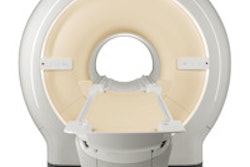Dear AuntMinnie Member,
How much training is necessary before radiologists can read PET/MRI scans proficiently? A new set of guidelines from the American College of Radiology (ACR) and the Society of Nuclear Medicine and Molecular Imaging (SNMMI) hopes to shed light on that question.
PET/MRI is still a relatively young modality, blending the complexity of PET's functional information with the high level of anatomical detail possible with MRI. So it hasn't been completely clear just how much experience and training is required to ensure competency.
The joint ACR/SNMMI guidelines set a floor for competency and create three different categories of readers based on expertise. They also take into account situations when two different readers are jointly reading a single hybrid PET/MRI exam. Learn more by clicking here for an article in our MRI Community.
While you're there, make sure to check out this story that questions whether older adults with back pain need imaging exams early in their workup.
Image security problems
How secure is your medical image data? Many healthcare industry observers are asking that question amid revelations this week that financial and medical data of 11 million beneficiaries in the Premera Blue Cross system may have been compromised in a security breach.
Healthcare data security is also the focus of a new study we're highlighting in our Imaging Informatics Community that reveals disturbing news: More than 700 DICOM medical image servers worldwide were totally open to outside computers, creating a security flaw that could be exploited to steal data.
That's according to researchers from Harvard University, who set up a script that was able to probe the entire global space of 4 billion IP addresses to find out which ones accepted requests for DICOM communication. Nearly half of the open servers were from the U.S., the group discovered.
Learn more by clicking here, or visit the community at informatics.auntminnie.com.
More NCoBC news
Our coverage of the National Consortium of Breast Centers (NCoBC) meeting continues this week with an article on how using nurse navigators can reduce your malpractice risk. Learn more by clicking here for an article in our Imaging Leaders Community.



.fFmgij6Hin.png?auto=compress%2Cformat&fit=crop&h=100&q=70&w=100)




.fFmgij6Hin.png?auto=compress%2Cformat&fit=crop&h=167&q=70&w=250)











